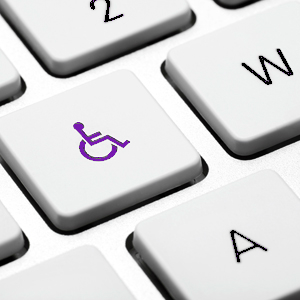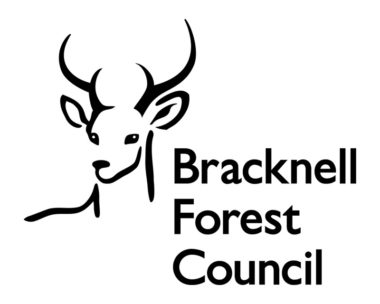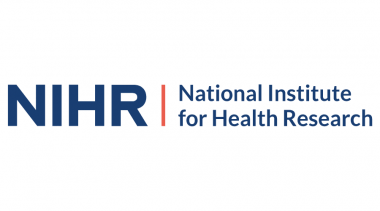What is Accessibility?
Accessibility is a growing concern in the UK. Before we can fully go into what web accessibility standards are and why they are important, we should all know what ‘accessibility’ actually means.
We like to define it in the sentence “Accessibility means that everyone, regardless of their disability or impairment, can access services, products and from their devices”.
Simply put, web accessibility means that those people with disabilities and impairments are able to access web services, information and products without limitation.
In the World Wide Web Consortium’s (W3C) Web Content Accessibility Guidelines (WCAG) it highlights that we have a duty of care to provide people with disabilities an online environment that is perceivable, operable, robust and understandable, making it easy to navigate and interact with the World Wide Web.
Check if you’re meeting accessibility standards, apply for your Free Accessibility Snapshot
Types of Disability
Web content accessibility guidelines are in place for anyone who has a disability, regardless of the type of disability. It’s important to keep in mind that there are four categories of disability that are directly addressed and form the foundation for accessibility requirements. Those are:
Hearing Disabilities
Hearing loss is categorised as mild, moderate, severe and profound. Individuals who are Deaf or hard of hearing will use different methods of communication including sign language and lip-reading.
WCAG 2.1 and WCAG 2.2 highlight numerous ways that websites and mobile applications can communicate with those with hearing disabilities.
Learning and Cognitive Disabilities
This is a broad category that focuses on the perception and processing of information and/or levels of developmental functioning. A person with learning difficulties or cognitive disabilities may have one or more associated conditions.
These include Attention Deficit Disorder (ADD), Dyslexia, Autism, Down Syndrome and others. WCAG 2.2 explains how to make your website easier to understand for these users.
Motor Disabilities
This category represents physical disabilities. They can relate to motor function of either the upper or the lower extremities. Some individuals with decreased mobility function may require assistance in many day to day tasks.
The WCAG 2.2 standards highlight how those with motor disabilities access and navigate websites and mobile applications and how to cater to these individuals.
Visual Disabilities
Those with visual disabilities possess a varied level of sight. They are split into two categories depending on severity: Low vision and Total Blindness. WCAG 2.2 accessibility regulations reveal how blind users access your website. They also outline how to tailor the User Interface and content to their needs.
What are Web Accessibility Standards?
Now that you’re aware of the disabilities that need to be considered, you need to understand why it’s important to follow the Web Accessibility Standards that have been outlined by the World Wide Web Consortium (W3C).
The W3C is an international body led by the inventor of the Internet, Tim Berners-Lee. It includes a number of members in the web world who are influential and knowledgeable. They decide standards based on what is considered to be best practice.
Back in 1998, the W3C published the first Web Content Accessibility Guidelines. A set of web content accessibility requirements that highlighted the best practices for creating online content. This has been amended to reflect the changes that have occurred since then. You can read A Simple Guide to the Expected Outcomes of WCAG 2.0 and the changes made recently to accommodate the huge shift toward mobile devices in WCAG 2.1 Changes Explained.
Why are Web Accessibility Standards Important?
At Shaw Trust Accessibility Services, we believe that there is nothing more important than giving equal opportunities to everyone. You can read more about the Shaw Trust history on our About Us page.
Without our team of disabled user testers, we would not be able to offer such a valuable product to all of our clients. They are the reason behind Shaw Trust Accessibility Services. To provide better access to a wider audience. We can show you how integral those people with disabilities are to society and encourage you to keep an open mind when you’re making your next employment decision.
Why should anyone be denied access to digital services simply because they require assistive technology? Would you stop someone wearing glasses from entering your store? No. So why are you missing out on the online spend of millions?
Of course, it’s not simply about missing out on potential sales. Public sector bodies also have an obligation to make their digital services accessible for everyone. Public sector websites provide essential services for our communities, and denying some groups access to these services simply isn’t an option.
This is why web content accessibility guidelines are essential. It gives those who use screen readers, voice navigation, one-handed keyboards and other forms of access methods the opportunity to use digital services in a way that suits them.
In a survey by Business Disability International, Click-Away Pound, it was revealed that more than 71% of disabled people will exit a website if they find it difficult to use. Whilst this is a good starting point, it’s not the only reason you should be accessible and why the standards are important.
-
The Moral Standpoint for Improved Accessibility
The morality of not being accessible is partly covered above. Do you want to be the organisation that isn’t tailoring your digital services to those with access issues? It is your responsibility to be able to meet the needs of everyone with your digital information and services. Accessibility is not ‘special treatment’ it’s equal treatment.
We like to put it this way: the odds of us being alive, as we are, holds the same probability as 2,000,000 people rolling a dice simultaneously and have it land on the same number. When each and every individual is that special, why should we label a group of humans and have it so they can’t access something online? Surely everyone has a right to access your information and services?
Social media is also a great tool for building a community and sharing information about access. Allowing people to talk about experiences they’ve had in the past and share information quickly with others. Yet some platforms still remain inaccessible and very difficult to use.
There is a social media account, @DontWantOurCash, that will publicly name and shame your business for not being accessible to people with disabilities. This could completely destroy a brand’s reputation with the disabled community and initiative of this kind are popping up all over the place.
There is an inclusion revolution on the horizon. Do you want to be ahead, leading the way and supporting the campaign or behind being targeted by it?
-
Profitability – Ignoring a Major Market
Whilst it’s important to understand the moral implications of not making a website accessible, it’s also damaging from a profitability point of view. With 1 in 5 people having a disability. You’re ignoring a total spending power of £249 billion worldwide.
If you’re a global business, that’s a lot of profit that is potentially lost to those competitors who are ensuring that they’re accessible.
Even if you’re not an international organisation, the UK’s disabled spending power is thought to be as much as £11.75 billion. This is around 10% of the total UK online spend in a year. This is a considerable loss of profits.
-
Legal Requirements
Web Accessibility Standards have set the bar for accessibility regulations. With a number of laws across the world referring to the WCAG 2.2 standards.
Worldwide, there are 43 current laws and policies that relate to accessibility. Whilst some are digital specific such as the UK’s Public Sector Accessibility Regulations, which highlights that all public sector bodies digital services should be accessible, there are others such as the United States Americans with Disabilities Act that covers access to everything, both physical and digital.
By discriminating against those with disabilities, you are also in breach of other wider legislation such as the Equalities Act 2010, Disability Discrimination Act and the Human Rights Act. These collectively highlight that discrimination against any person is not permitted and that everyone should have equal rights to information regardless of their ability.
Need Some Help and Advice?
We understand that it can feel like a minefield when you are faced with making global changes to your website. Updating a site that it is suitable for screen readers, voice navigation, one-handed keyboards and other access tools can feel like a huge challenge. However, you can start with small changes to the way you edit your website which will make a big difference. You can make small incremental changes that will have a positive impact.
If your organisation needs assistance in becoming accessible we would love to help. Get in touch with us today to find out exactly how we can help you.
Better still, introduce an accessibility champion into your organisation and get things moving in the right direction.
Further Accessibility Reading
If you’d like to learn more about accessibility requirements and gain a better understanding of some of the terms commonly used then we’ve created a series of blog posts just for you. Simply click on the post titles below;







